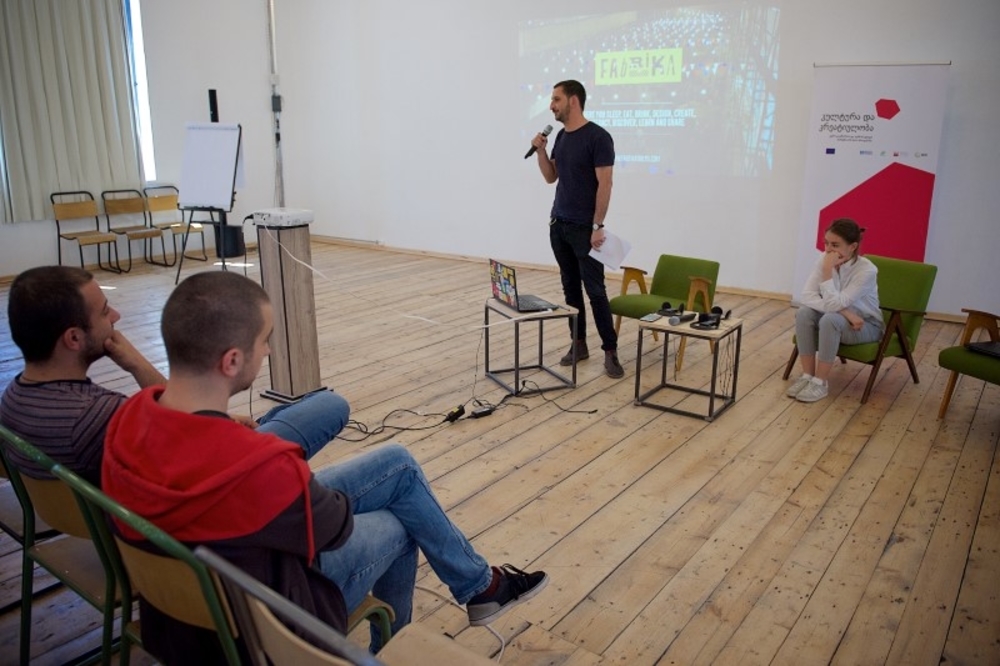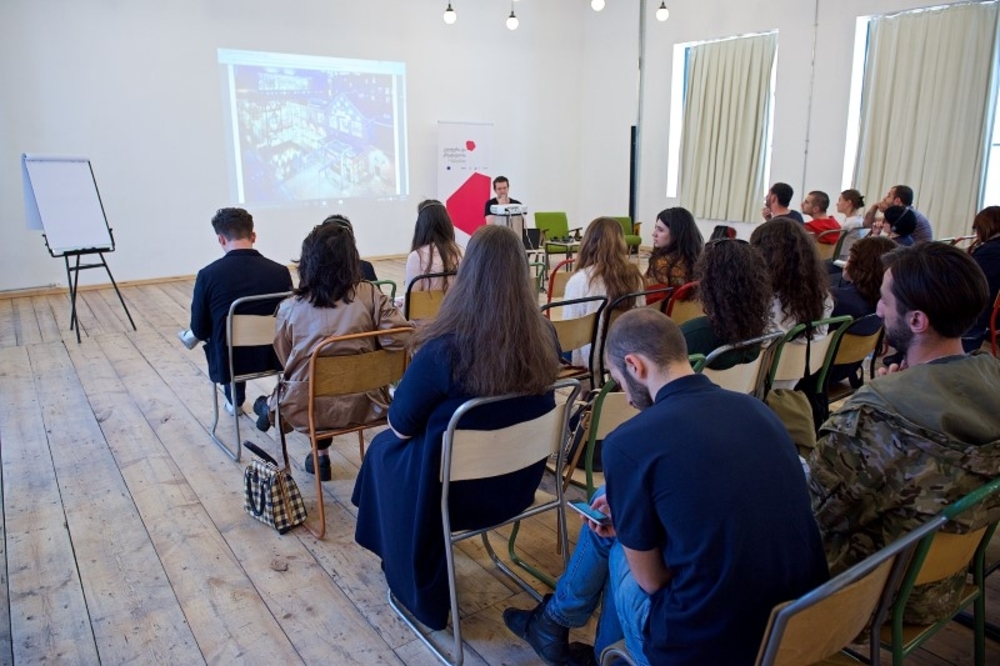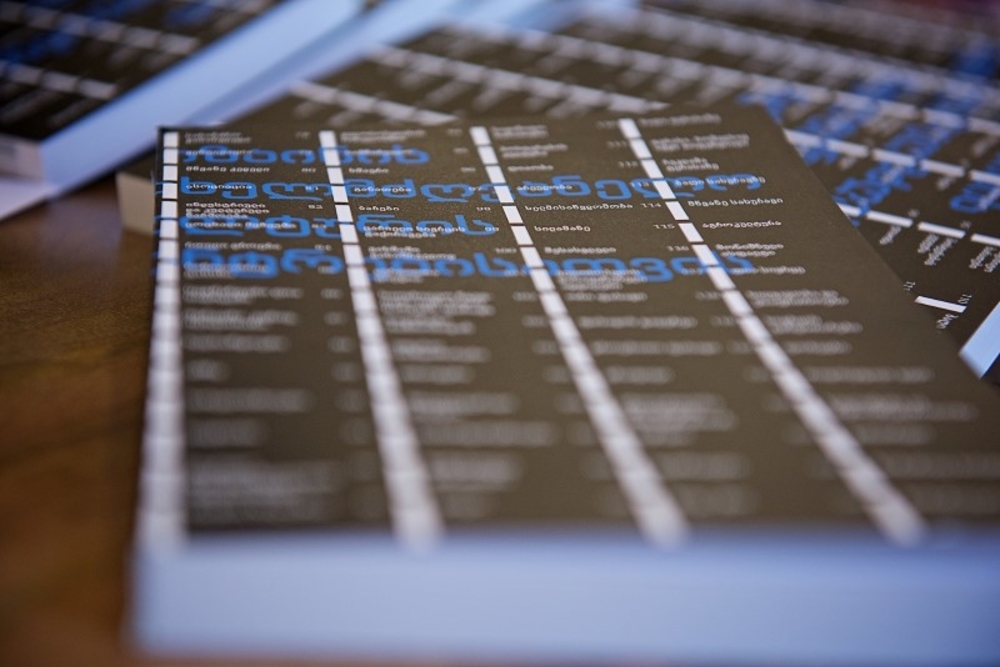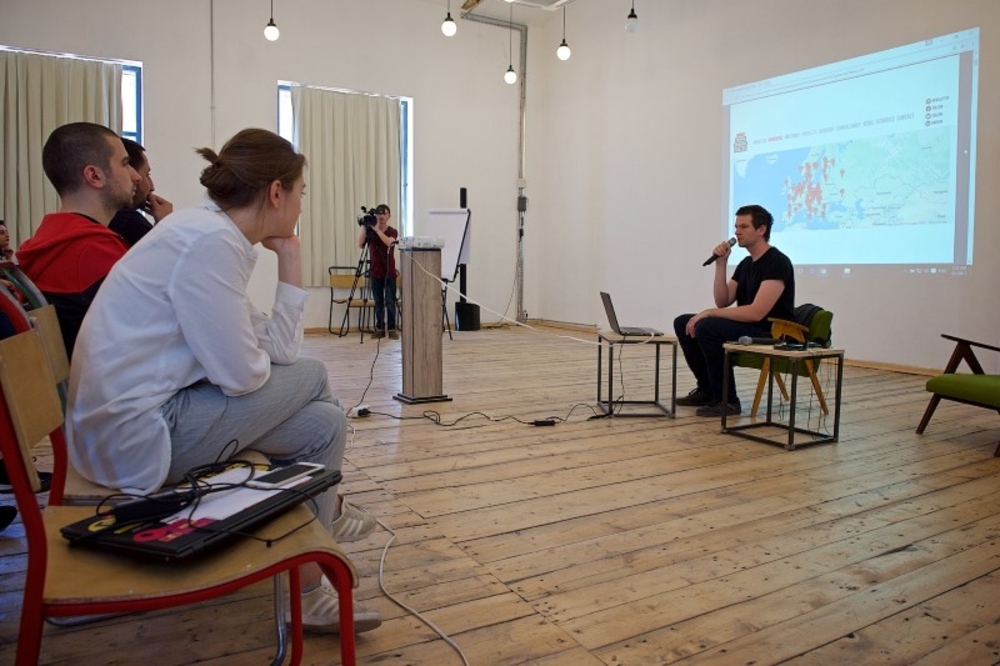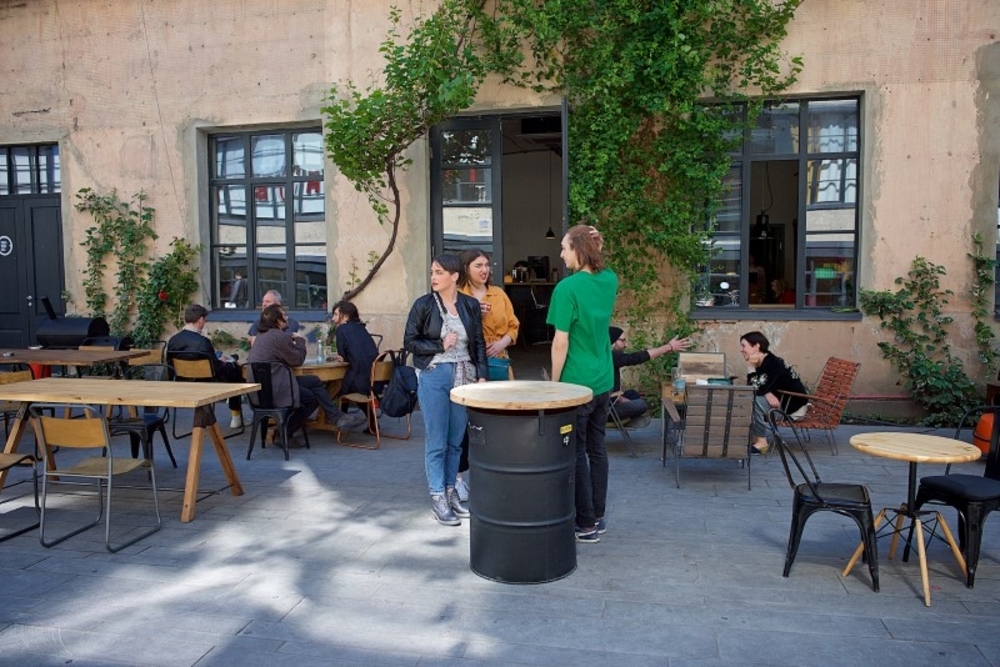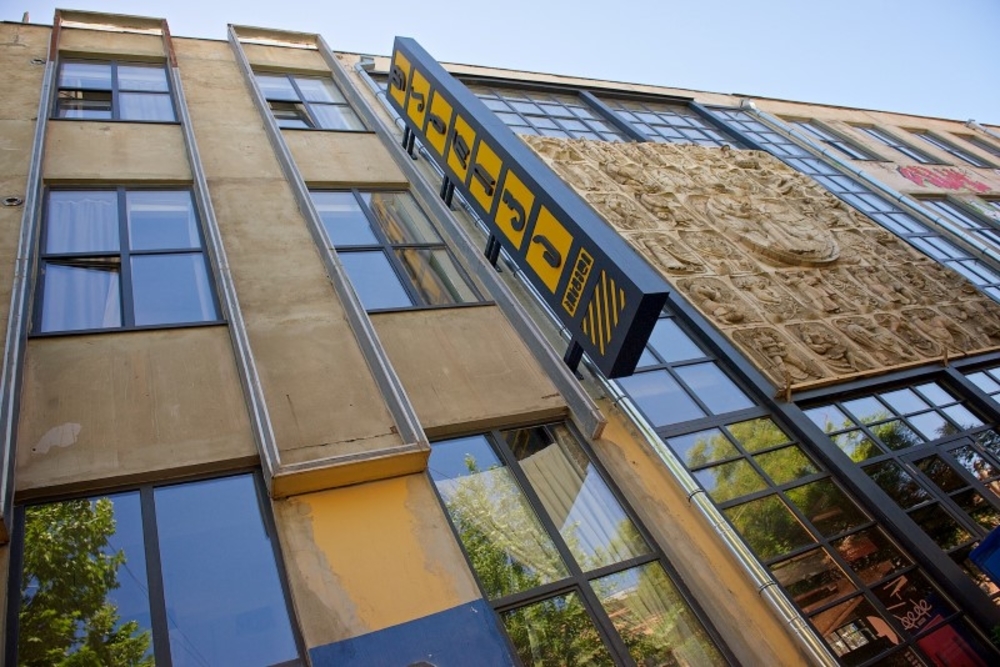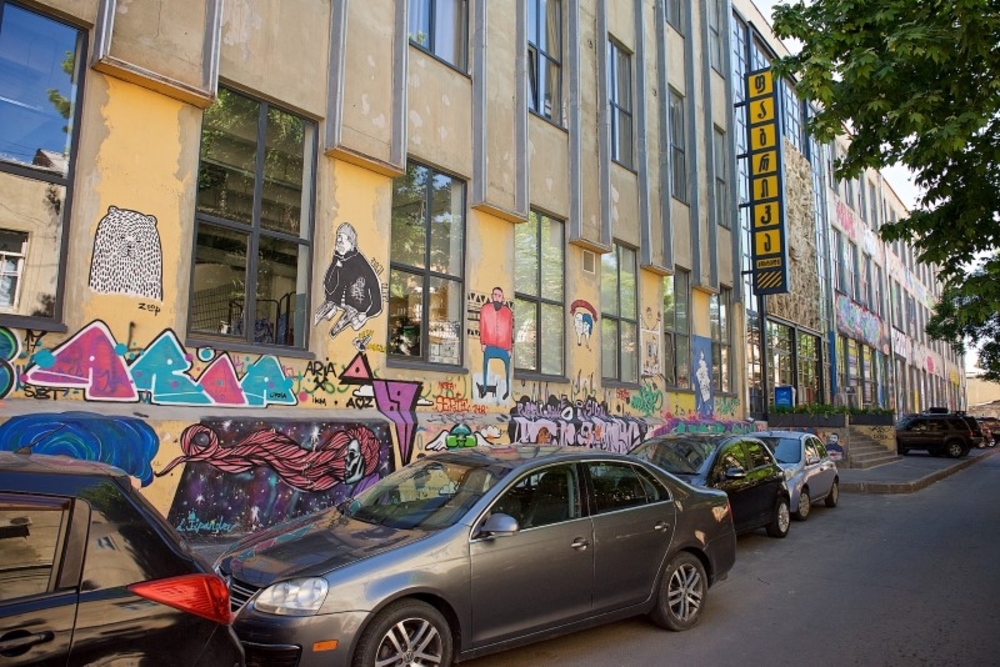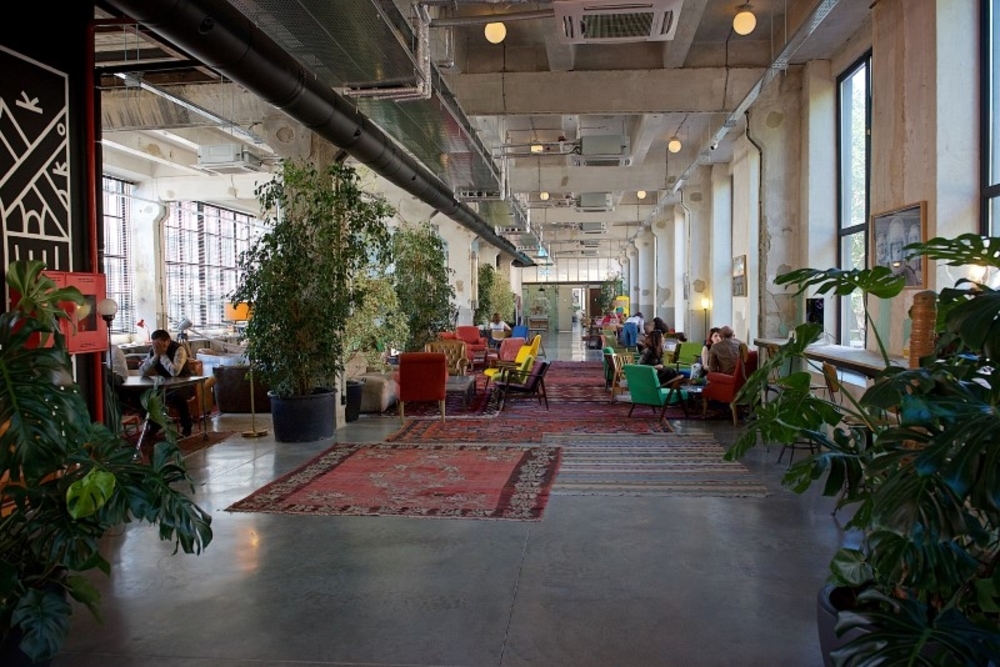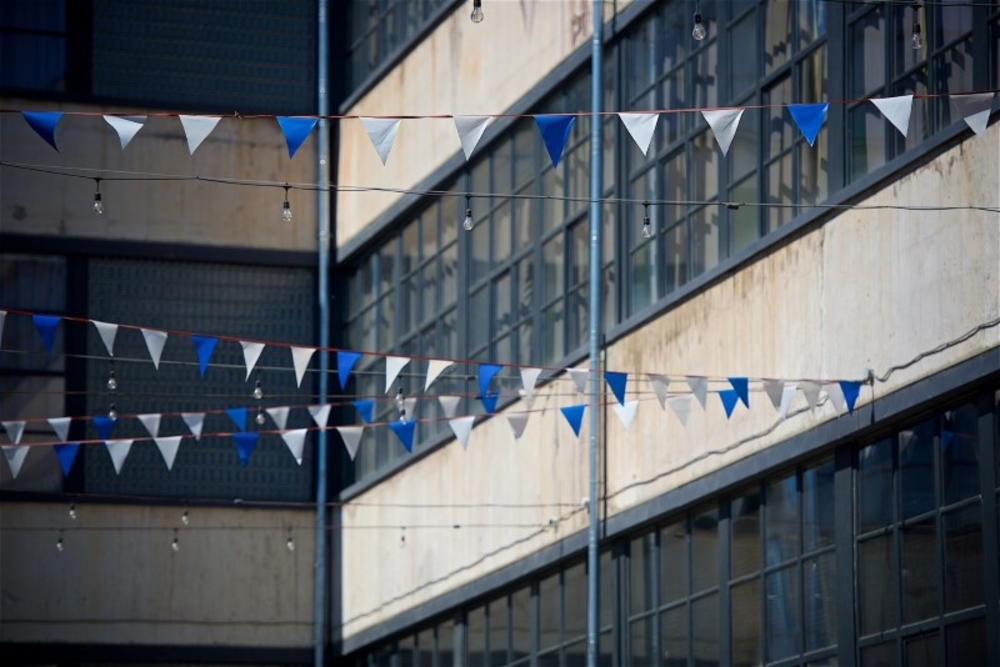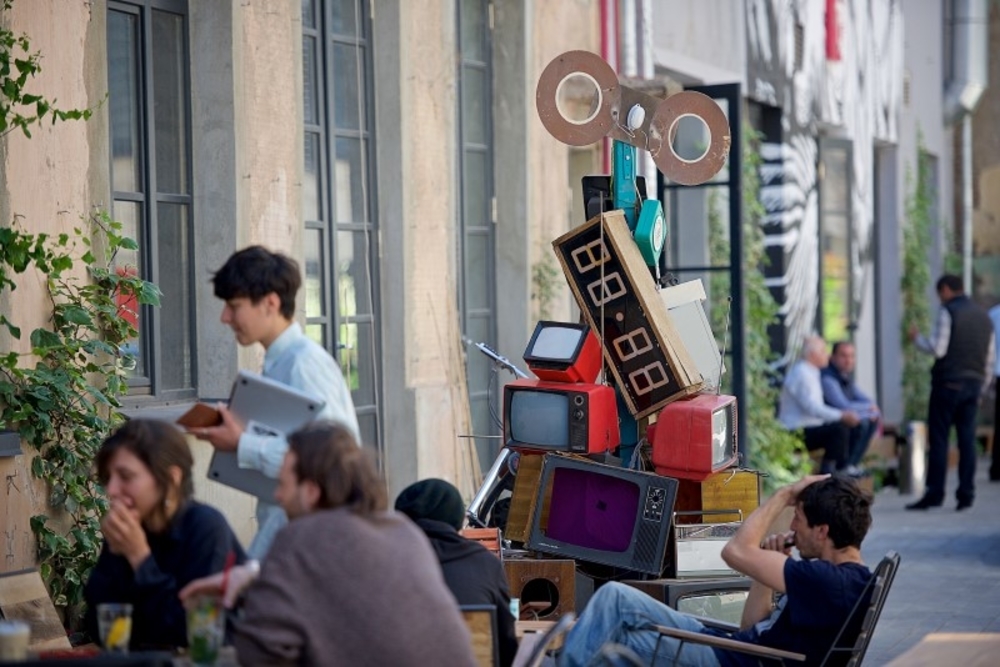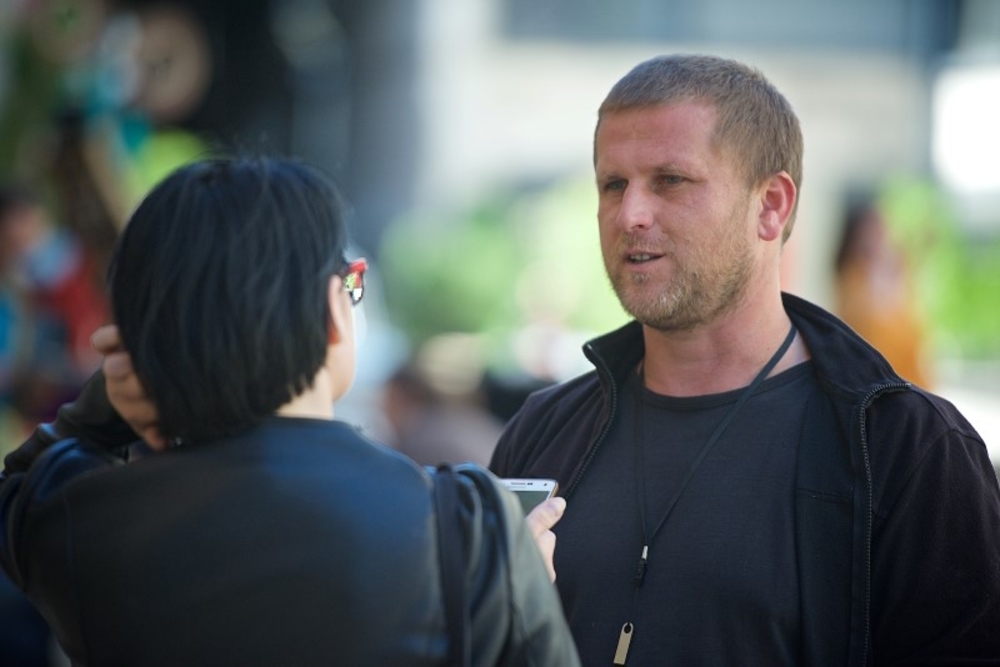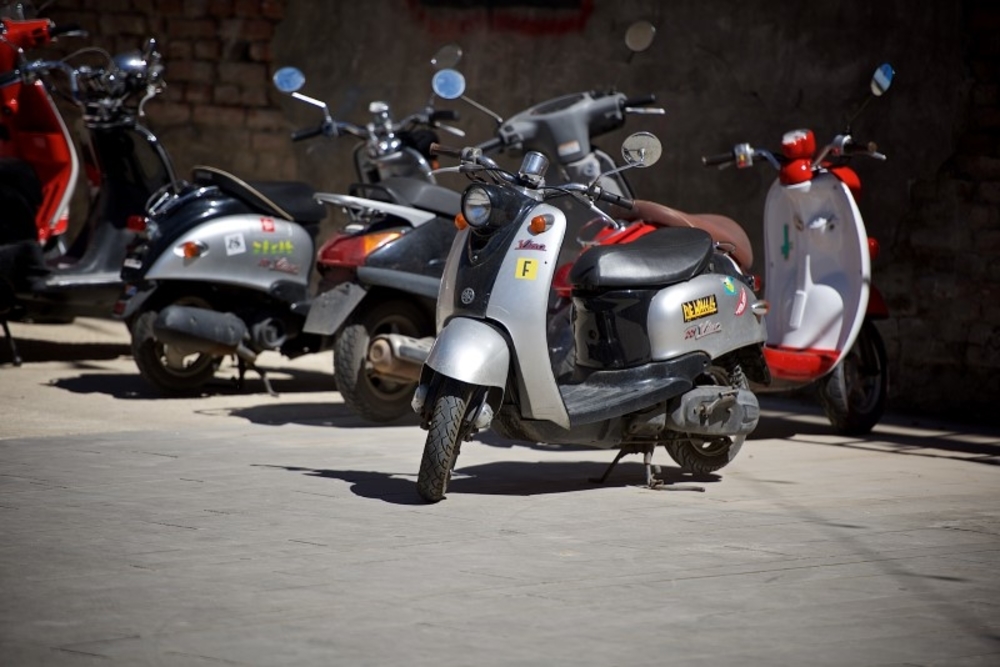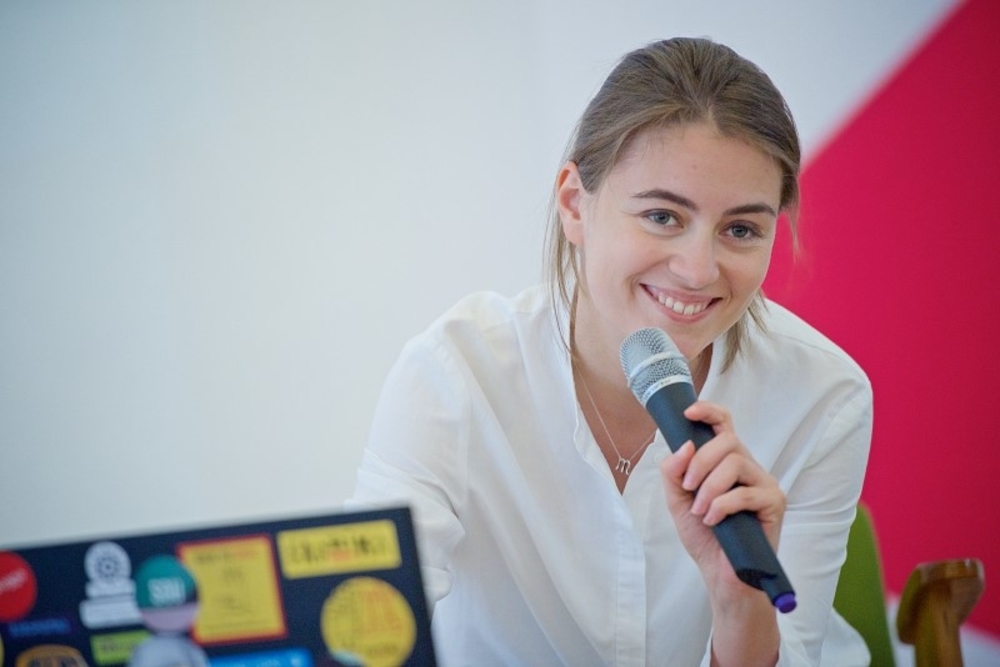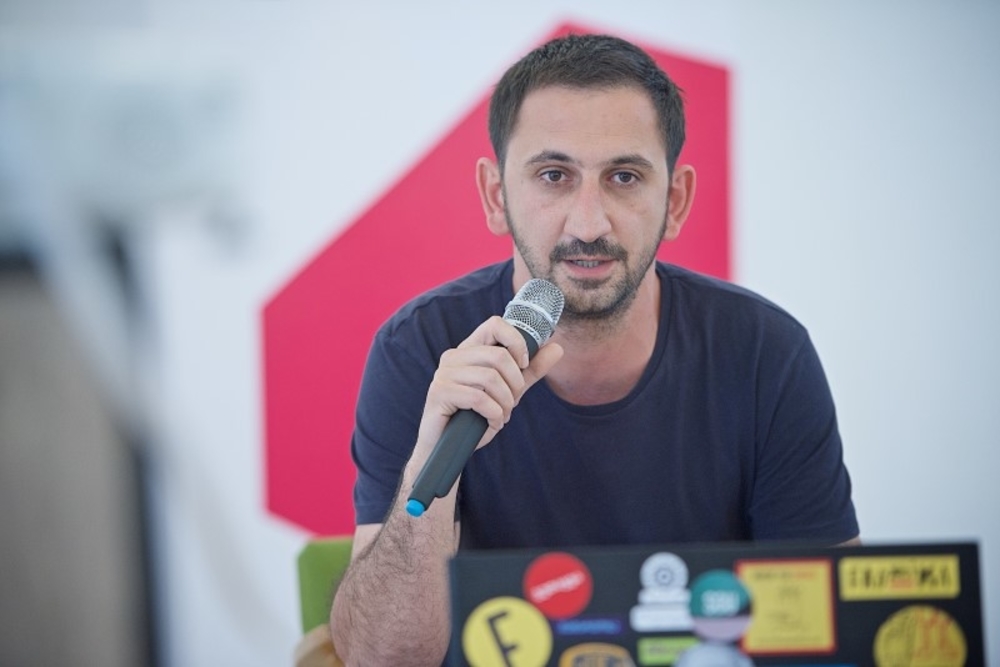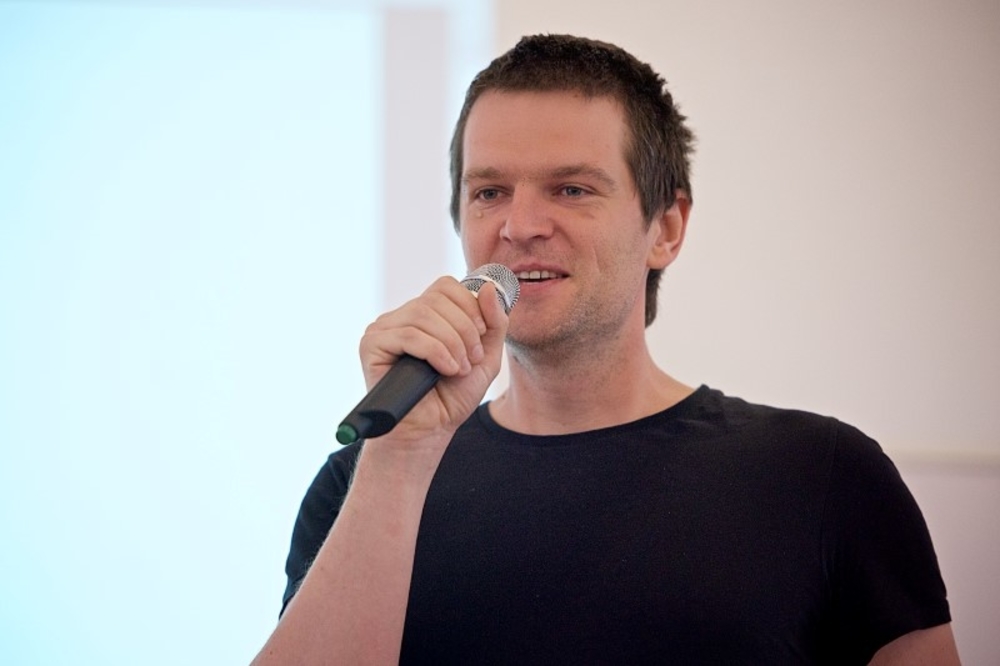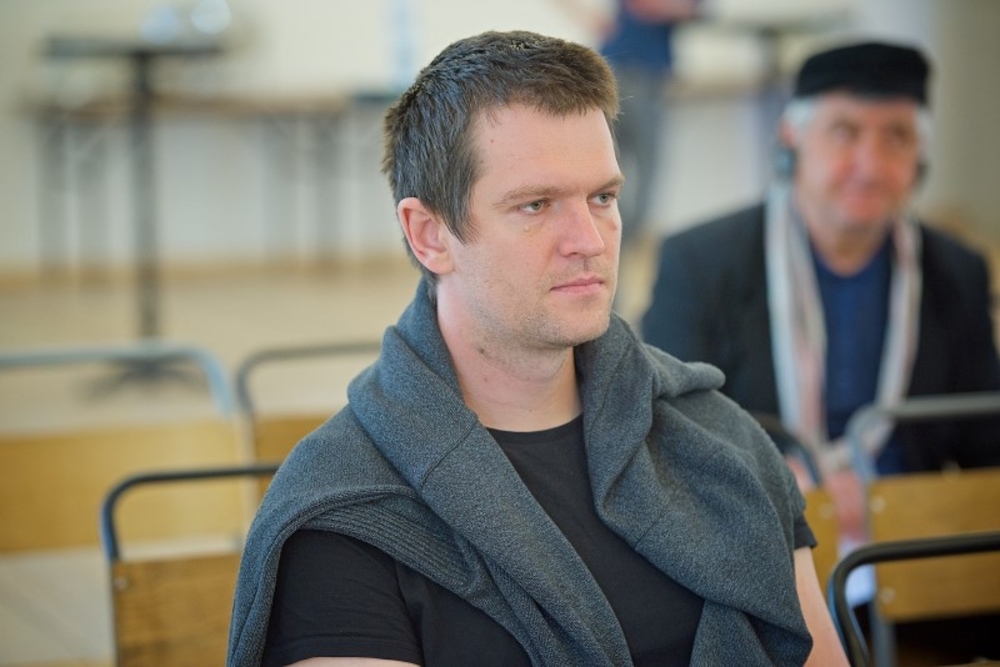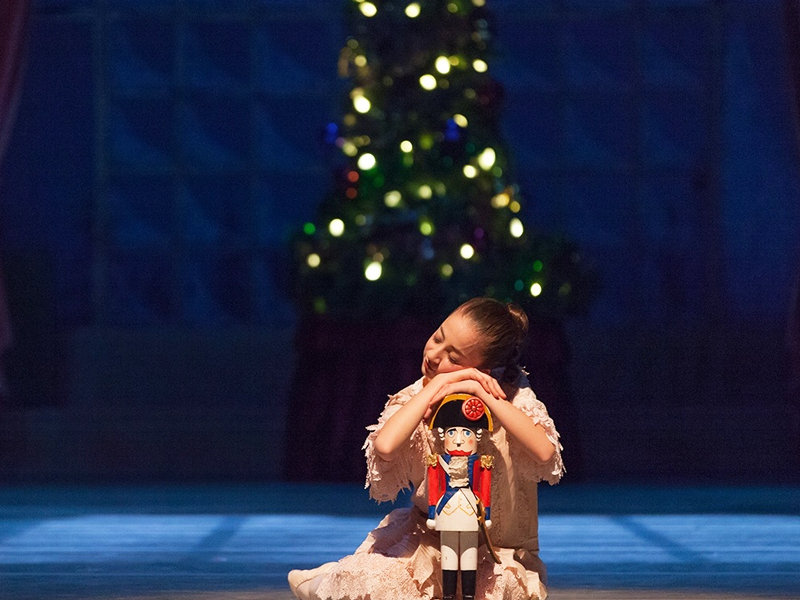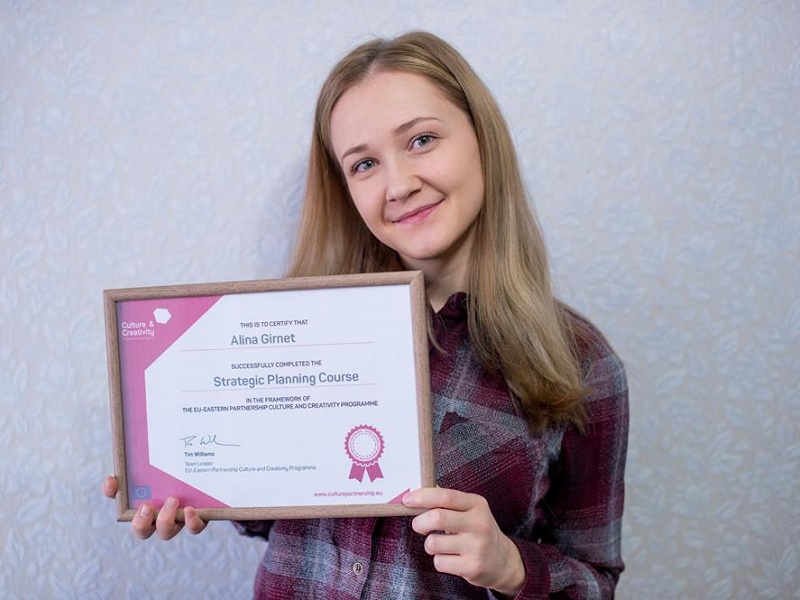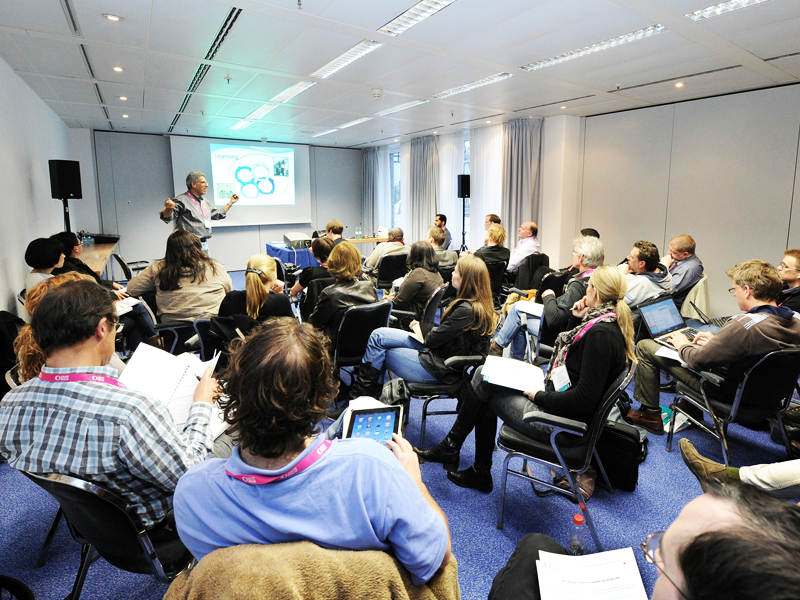
Improving Life of a City: Roundup of World’s Cultural Centres Design
Illustrated with numerous photographs, the book is all about modern cultural spaces whose platforms are bringing creative people together, and host festivals, exhibitions and many other events in the field of contemporary art.
The book was published with the support of the Trans Europe Halles network and the Slovak Zilina-Zariecie centre. With the support of the EU-EaP Culture and Creativity Programme, the work on cultural centre creation was translated into Georgian and presented. Want to get hold of it? Just contact the programme coordinator or download it from the website.
Peter Lenyi: It was a long and interesting journey
Peter Lenyi is a 31-year-old native of Bratislava and graduate of the Slovak University of Technology. A co-founder of the 20-21 Architects architecture studio, Lenyi has repeatedly won various competitions and received many awards. For his design of an observation deck on the mountain near the town of Zilina, the young specialist was awarded the Prize of the Slovak Chamber of Architects in 2016, and for the development of experimental communications of a demonstration screen at the entrance to the historical centre of Zilina, he received a national prize.
The Slovak architect decided to share his impressive experience of design in the Design Handbook for Cultural Centres. The book outlines the urban, architectural and design characteristics of cultural centres members of Trans Europe Halles.
“We invited architects, graphic designers, journalists and the directors of five cultural centres from Sweden, Italy and Spain to work on the book. For about a week, we discussed what our book should tell our readers. And work on the book lasted a total of two years. You know, I just took three of my friends, a car and we set out on a trip to these cultural centres, from town to town. It was a long and interesting journey,” says Lenyi.
Love for buildings with the past
It so happened that people of contemporary art have always been attracted to buildings with a soul, with a past. Therefore, industrial spaces, particularly abandoned factories, enterprises and garment workshops, enjoyed a big advantage in their choice of location for their creativity. Because these were buildings with a past.
It’s no secret that renting such facilities is a great way to save money and designers tend to get enthusiastic about turning ruins into an original contemporary culture centre. Especially when such multifunctional spaces can be created not only in buildings but also on ships, in trains, in gas chambers, bunkers, tunnels, basements and even churches and other locations that at first sight seem unsuitable for art.
It is such centres from England, Austria, Germany, the Netherlands, France, Sweden, Spain, Italy, Hungary, Finland, Poland, Lithuania, Slovakia and other countries and the stories of their creation from scratch that Peter Lenyi describes in his book. According to the author, he did not try to make it scientific, but simply to recount how to create a really beautiful, stylish and functional place for creativity from virtually the impossible.
“The best and most successful example of a contemporary cultural centre is, in my opinion, Manifatture Knos in Lecce, southern Italy. Its leadership has very innovative ideas: it’s not that they don’t engage in management, it’s that they don’t create a specific programme. Because they have recognised the centre as an open platform for anyone who wants to come and organise a cultural event to their taste. This is a rare example of artist freedom,” says Peter Lenyi.
Marek Adamov: I like their freedom
Marek Adamov is not an architect: he is an activist from the Cultural Centre located in the building of the functioning railway station Zilina-Zariecie. It is located in the Slovak town of Zilina and operates as a platform for contemporary art events, such as festivals, plays, performances, workshops, shows, exhibitions and concerts.
The 36-year-old specialist Adamov has been in this art environment for 20 years and calls it his life’s project. “I am very interested in art and supporting artists because they create amazing ideas, they approach talking about what is going on around us with a critical eye. I like their freedom, in contrast to the business environment.”
According to Marek, this is very pleasant and simultaneously useful work when many people come together in such a cultural and eclectic space who, according to the activist, generate ideas, establish creative ties and solve issues of how to make city life better. “I’m crazy about the very process of creating the Cultural Centre when through the joint efforts of volunteers and interested people, an idea is created, ways of implementing it are undertaken and a dream becomes a reality. When you see how great the desire is to create a truly impressive space for spending a good time, interesting conversations, exchanging ideas, thoughts and emotions.”
What is the experience of cultural centres in Georgia?
In Georgia, a multifunctional cultural centre of a similar format emerged for the first time on 1 October 2016. It was Fabrika, which is located in a former Soviet garment factory covering 8,000 square metres. The birth of the Fabrika centre is a striking experience of the transformation of an old industrial space into a modern art centre.
Georgian architects decided not to fundamentally change the spirit of the Soviet era, leaving a piquant atmosphere of the past and adding to the space comfort, attractive minimalism, urban motifs, and details of ergonomics and refined aesthetics.
“The people behind the idea were originally two young men from Multiverse Architecture, Devi Kituashvili and Gogita Sakvarelidze. They spent a long time searching for a suitable building and eventually decided to go with this factory. And then they found partners in the guise of the companies Achara Bet and Grato Management. It was this group, together with builders, that created the Fabrika centre in six months,” says the centre’s brand manager Marika Kvirkvelidze.
Today, the centre houses a restaurant, a café and bar, a hostel, artist studios, galleries, coworking spaces. Seminars, exhibitions, presentations and many other cultural events are held there. The Tbilisi-based Fabrika is considered not only a unique location for professionals from the cultural and creative industry of Georgia, but also an excellent opportunity for exchanging experience, and supporting and developing Georgian contemporary artists.








